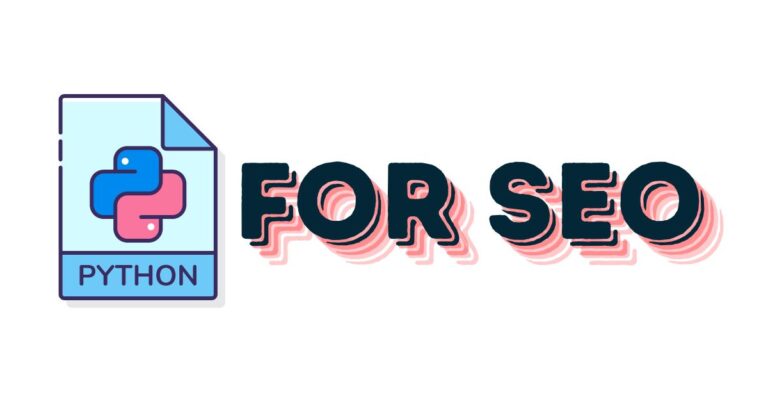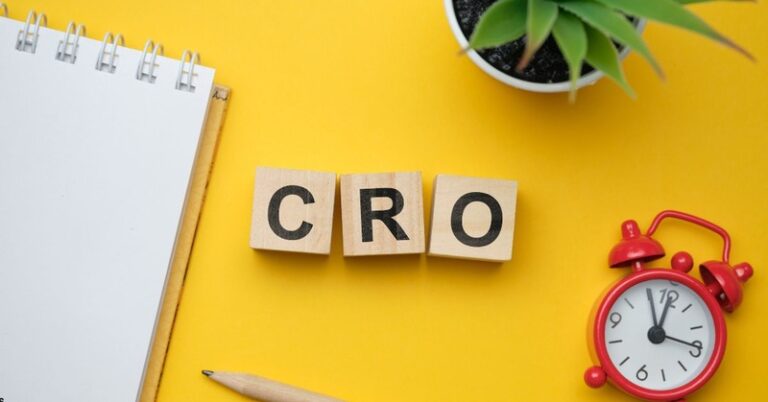Content Designer Interview Questions + Answers in 2024
Landing an interview for a content design role is exciting, but it can also be quite nerve-wracking.
You’ve polished your resume and your portfolio is ready to go, but the real challenge lies in proving that you’re the right fit for the company’s needs and culture. As the interview day draws near, you realize that it’s not just about showcasing your skills; it’s about deeply understanding the company’s strategy and how you can contribute.
To help you get ready, we’ve put together some key tips on how to prepare effectively for a content designer interview. With this guide, you’ll be equipped to not only answer questions but also to demonstrate how you can bring unique value to the team.
What are the Commonly Asked Questions in a Content Designer Interview?
These questions below should give you some ideas on what hiring managers ask. Consider each of these questions as insights:
1. What is your understanding of content design?
Interviewers ask this to see if you really get what content design is all about.
It’s not just about making things look good; it’s about creating content that people can easily interact with and that achieves specific goals.
To nail this answer, explain what content design means to you, including how it involves understanding both the user’s needs and the business’s goals.
You should touch on how content design integrates text, visuals, and user interactions to create a seamless experience.
Example Answer
“Content design is all about making sure the content serves its purpose effectively.
It means planning and crafting content that’s not only engaging but also easy for users to interact with, meeting their needs and driving business goals.
For instance, when I worked on a project to increase user sign-ups, I focused on simplifying the language and making the call-to-action clear and compelling, which boosted sign-ups by 25%.”
2. Can you describe your first project in content design?
This one’s great for getting a sense of your beginnings in content design and seeing how you’ve evolved.
Talk about the goals of your first project, the approach you took, the challenges you faced, and how it all turned out. This gives you a chance to show off your problem-solving skills and how you’ve grown since that first project.
Example Answer
“In my first major content design project, I was tasked with improving engagement for a lifestyle blog.
I started by identifying the types of content that resonated most with our audience using analytics. I then redesigned the content format to include more visuals and interactive elements, like quizzes and polls, which led to a 30% increase in user engagement.
It was a fantastic learning experience that taught me the importance of data in designing content and the power of interactive elements.”
3. What content management systems have you used?
They’re checking to see if you’re comfortable with the technical tools of the trade.
Name the CMS platforms you’ve worked with and discuss how you’ve used specific features to enhance your projects. This shows you’re not only tech-savvy but also thoughtful about how you choose and use tools to fit project needs.
Example Answer
“I’ve used several content management systems like WordPress, Drupal, and Adobe Experience Manager, tailoring each to the project’s needs.
For example, with WordPress, I often use its vast plugin ecosystem to enhance site functionality, like integrating SEO tools to improve content visibility. In Drupal, I leverage its strong security features for projects requiring robust data protection.
Working with Adobe Experience Manager has allowed me to efficiently manage large-scale content needs, ensuring brand consistency across global markets.”
4. How do you handle tight deadlines?
Handling tight deadlines is crucial in content design, where project timelines can be fast-paced.
This question tests your time management skills and your ability to deliver quality work under pressure.
Describe your method for organizing tasks and managing your time effectively, emphasizing any tools or techniques you use to stay on track and maintain high standards.
Example Answer
“When faced with tight deadlines, I prioritize tasks based on their impact and urgency. I use project management tools like Asana to keep track of all deadlines and project stages.
For instance, during a recent campaign launch, I broke down the project into smaller, manageable tasks and set daily goals.
This approach helped me stay organized and ensure that each part of the project received the attention it needed, allowing us to meet the deadline without compromising on quality.”
5. What tools do you use for creating and managing content?
This question helps interviewers understand your proficiency with industry-standard tools and your adaptability to new technologies.
Discuss the tools you use for content creation, such as Adobe Creative Suite, and management tools like Contentful or HubSpot.
Highlight how these tools enhance your productivity and the quality of your work.
Example Answer
“I use a variety of tools depending on the project’s needs.
For content creation, Adobe Creative Suite is my go-to for everything from graphic design to video editing. For content management, I prefer using HubSpot for its integration capabilities and user-friendly interface, which streamline the publishing process.
Additionally, I use Trello for task management to keep projects organized and on schedule, ensuring that all team members are aligned and aware of deadlines.”
6. Can you explain what SEO is and why it’s important in content design?
Understanding SEO is essential for content designers to ensure that the content not only meets design standards but also performs well in search engines.
Explain SEO as the practice of optimizing content to increase visibility in search engine results. Discuss the integration of keywords, meta tags, and accessibility features, and how these elements contribute to more effective content.
Example Answer
“SEO, or Search Engine Optimization, involves optimizing web content to rank higher in search engine results.
It’s crucial because it helps your content reach the right audience at the right time. In content design, this means carefully integrating keywords, optimizing images and videos, and ensuring that all content is accessible.
For example, on a recent project, by improving the SEO of our articles, we saw a 40% increase in traffic, which significantly boosted our client’s engagement rates.”
7. How do you prioritize your tasks in a project?
Prioritization is key to effective project management in content design.
Explain your strategy for assessing task urgency and importance, and how you align your work with project goals and deadlines. Mention any tools or methodologies you use, like the Eisenhower Box or Agile practices.
Example Answer
“I prioritize tasks based on their impact on the project’s overall goals and their deadlines.
I use the Eisenhower Box method to distinguish between tasks that are urgent and important versus those that are less so.
This helps me focus on what truly moves the project forward. For instance, for a website redesign, I focus first on user experience enhancements before moving on to aesthetic improvements, ensuring that the site is both functional and visually appealing.”
8. What is your approach to understanding a brand’s voice and tone?
Understanding a brand’s voice and tone is crucial for creating content that resonates with its target audience.
Explain how you conduct research on the brand’s values, audience, and existing communications to emulate their style accurately.
Discuss how you use this understanding to create cohesive and authentic content.
Example Answer
“To grasp a brand’s voice and tone, I start by reviewing all existing content and communications, including their website, social media, and marketing materials.
I also speak with key stakeholders to understand the brand’s values and the image they wish to project. This research allows me to produce content that feels authentic to the brand.
For example, when working with a startup, I adapted their energetic and innovative tone into all digital content, which helped establish their brand identity early on.”
9. How do you ensure your content is readable and engaging?
This question examines your ability to craft content that is both accessible and compelling.
Discuss your use of language, structure, and visual elements to enhance readability and engagement.
Mention tools like the Hemingway App or readability tests to ensure your content is clear and easy to understand.
Example Answer
“I ensure content readability by keeping sentences short and using simple language that’s easy to understand. I also use subheadings and bullet points to break up text and make it more scannable.
For engagement, I incorporate relevant images and interactive elements like polls or quizzes. Using tools like Hemingway App, I regularly check my content’s readability score to ensure it’s accessible to a broad audience.
This approach helped increase user time on page by over 50% on several key articles.”
10. What do you enjoy most about content design?
This question allows interviewers to gauge your passion for the field and what motivates you as a content designer.
Share what aspects of content design excite you the most and how these aspects influence your work. This can help interviewers understand your fit for the role and your potential to thrive in their team.
Example Answer
“What I enjoy most about content design is the ability to blend creativity with strategy.
I love the challenge of taking complex information and making it accessible and engaging through careful design and thoughtful content strategies.
Seeing the direct impact of my work on user engagement and client satisfaction is incredibly rewarding.
For instance, redesigning a client’s newsletter layout and seeing their open rates and engagement increase significantly is always exhilarating.”
11. Describe a content strategy you developed and its impact.
This question tests your strategic planning skills and your ability to drive tangible business results through content design.
Describe the objectives of the strategy, the steps you took to implement it, and the outcomes. Focus on how your strategy improved user engagement, increased revenue, or enhanced brand awareness.
Example Answer
“For a recent e-commerce client, I developed a content strategy centered on user-generated content and SEO to increase organic traffic and customer engagement. I initiated a campaign encouraging users to submit their own photos using the product, which we featured on our platforms.
Alongside, we optimized all product descriptions and blog posts for SEO. This strategy led to a 40% increase in organic traffic and a 15% rise in sales over six months, significantly boosting the brand’s market presence.”
12. How do you incorporate user feedback into your content?
Incorporating user feedback is crucial for enhancing content relevance and effectiveness.
Explain how you gather and analyze feedback through surveys, user testing, or social media engagement, and how you use this information to iterate on content.
Example Answer
“I regularly use user feedback to refine and optimize content.
For example, after launching a tutorial series, I gather feedback through surveys and monitor comments on social media and YouTube. Based on the feedback, I adjust the pacing, clarify any confusing sections, and add more examples to increase comprehension.
This approach has consistently improved content engagement and user satisfaction.”
13. Explain your process for creating content for a new target audience.
This question assesses your ability to adapt strategies to meet the needs of different audiences.
Describe how you research a new audience, including analyzing demographics, preferences, and behaviors, and how you use this information to create tailored content.
Example Answer ****
“When tasked with creating content for a new target audience, I start with detailed audience research using tools like Google Analytics and social media insights to understand demographics and preferences.
I also conduct interviews with target users to gain deeper insights. Then, I craft personas that guide the content creation process, ensuring it resonates with the audience.
For a project targeting millennials, I focused on mobile-optimized, visually-rich content, resulting in a 50% increase in engagement among this group.”
14. How do you collaborate with other teams, like UX designers or marketers?
Effective collaboration across disciplines is essential for successful content design.
Explain how you communicate and work together with other teams to ensure that content meets both user experience and marketing goals.
Example Answer
“I collaborate closely with UX designers and marketers by participating in regular planning meetings and sharing insights across teams.
For instance, when working on a website redesign, I ensure that the content strategy aligns with UX design principles and marketing objectives.
We use collaborative tools like Slack and Miro to keep communication open and integrate feedback efficiently, which has been crucial in launching cohesive and effective campaigns.”
15. What methods do you use to ensure content consistency across different platforms?
Maintaining consistency across platforms is vital for brand integrity and user experience.
Discuss how you use style guides, content management systems, and cross-platform reviews to ensure that all content is uniform.
Example Answer
“To ensure consistency across all platforms, I develop comprehensive style guides that outline voice, tone, and visual elements.
I also use content management systems like Contentful to centralize content operations and ensure that updates are simultaneously deployed across all platforms.
Regular cross-platform reviews help us catch and correct any discrepancies, ensuring the content remains consistent whether a user interacts with it on a mobile app, website, or social media.”
16. Share a challenge you faced in a content design project and how you overcame it.
This question helps interviewers understand your problem-solving skills and resilience.
Describe a specific challenge, the steps you took to address it, and the results of your efforts. Focus on your ability to identify the problem, collaborate with others, and implement a solution that improved the project outcome.
Example Answer
“In a recent project aimed at redesigning a client’s website, we faced significant pushback from stakeholders who were hesitant to adopt a more modern look.
To address this, I organized workshops where stakeholders could voice their concerns and see design prototypes in action.
By actively engaging them in the process and showing them data on user engagement improvements from similar redesigns, I was able to gain their buy-in. The project was a success, resulting in a 40% increase in user time spent on the site.”
17. How do you measure the success of your content?
Measuring content success is crucial for evaluating its effectiveness and making informed decisions.
Discuss the key performance indicators (KPIs) you track, such as engagement rates, conversion rates, or SEO rankings, and how you use analytics tools to measure these metrics.
Explain how you align these measurements with business objectives to ensure the content is achieving its intended goals.
Example Answer
“I measure content success by a combination of engagement metrics—like time on page, bounce rates, and social shares—and conversion metrics, such as newsletter sign-ups or product purchases.
Using tools like Google Analytics and A/B testing platforms, I can see which pieces of content perform best and why.
For instance, by optimizing a series of blog posts for key search terms, I was able to double the organic traffic to those posts, significantly boosting the site’s overall visibility.”
18. Can you discuss a time when data influenced your content decisions?
This question assesses your ability to use data-driven insights to inform content strategy.
Describe a specific instance where you used data to make a significant change to your content approach, highlighting how this data-driven decision led to improved outcomes.
Example Answer
“In my previous role, user data showed that our instructional content had high initial clicks but low completion rates.
I used these insights to restructure our articles into shorter, more interactive formats, incorporating quizzes and infographics to maintain user interest.
This change not only increased the completion rates by 60% but also improved user feedback on the helpfulness of the content.”
19. What strategies do you use to ensure content inclusivity and accessibility?
Inclusivity and accessibility are critical in ensuring content is available to all users, regardless of their abilities or backgrounds.
Explain how you incorporate accessibility standards, like WCAG, and inclusivity practices into your content design process, ensuring that your content can be accessed and understood by everyone.
Example Answer
“I ensure content inclusivity by adhering to the Web Content Accessibility Guidelines (WCAG) and by conducting regular accessibility audits using tools like AXE and WAVE.
I also use inclusive language and consider cultural sensitivities when creating content.
For example, I recently led a project to revamp our website’s content to include alt text for all images, video captions, and keyboard-navigable structures, which made our site more accessible to people with visual and motor impairments.”
20. How do you stay updated with the latest trends in content design?
Staying current with industry trends is essential for continuous improvement and innovation in content design.
Share the resources you use, such as specific blogs, newsletters, webinars, or conferences, and discuss how you apply what you learn to your projects.
Example Answer
“I stay updated with content design trends by regularly reading industry blogs like Smashing Magazine and A List Apart, and attending webinars and conferences such as Content Marketing World.
I also participate in several professional online communities.
Applying new trends, I recently integrated interactive AR elements into a campaign, which significantly increased user engagement and set our content apart from competitors.”
21. Describe a complex content design project you managed. What were the outcomes?
This question is aimed at understanding your capability to handle large-scale or intricate projects.
Discuss a specific project where you were responsible for the content design, focusing on the complexities involved, the strategies you employed, and the results achieved.
Highlight your project management skills, creativity, and ability to deliver impactful outcomes.
Example Answer
“I led a complex project to redesign the content strategy for a multinational corporation’s new product launch.
The challenge was to create content that aligned with diverse cultural norms across different regions. My team and I developed localized content strategies that catered to each market’s preferences and regulatory requirements. We used a phased rollout plan to manage the project efficiently.
The result was a 30% increase in user engagement in the target markets and a successful product launch that exceeded the client’s sales expectations by 20%.”
22. How do you align content design with business goals, user needs, and technical constraints?
This question evaluates your ability to balance various aspects of content strategy to meet overall business objectives.
Explain your approach to understanding business goals, researching user needs, and considering technical limitations to create effective content strategies.
Illustrate how you integrate these elements to develop content that supports business growth while enhancing user experience.
Example Answer
“In aligning content design with business goals and user needs, I first conduct stakeholder interviews to understand the business objectives clearly.
Simultaneously, I gather user data through surveys and usability testing to comprehend user expectations and requirements.
For example, in a recent project, we had to ensure the mobile responsiveness of our content due to high mobile user traffic, which was a technical constraint.
By creating responsive designs and testing them across devices, we improved the user experience, which led to a 40% increase in mobile engagement and supported the business’s goal of increasing mobile conversions.”
23. Share an example of how you have used A/B testing to refine content design.
A/B testing is a critical tool for optimizing content effectiveness.
Discuss a specific instance where you implemented A/B testing to refine various content elements. Highlight the changes tested, the data collected, and how the insights gained were used to enhance the content’s performance.
Example Answer
“In a project aimed at increasing newsletter sign-ups, I used A/B testing to determine the most effective CTA placement and wording.
We created two versions of the landing page, each with different CTA styles and placements. The version with a CTA at the top of the page and more action-oriented text increased sign-ups by 25% compared to the other.
This data-driven approach not only optimized our sign-up process but also provided insights into our users’ preferences, which informed future content designs.”
24. How do you handle conflicting feedback from stakeholders?
This question tests your communication and conflict resolution skills.
Describe your approach to managing differing opinions among stakeholders, ensuring that the final content design meets business objectives while satisfying stakeholder expectations.
Example Answer
“When I receive conflicting feedback from stakeholders, I first ensure all opinions are heard and documented. I then prioritize the feedback based on the project’s goals and user research.
For example, if some stakeholders prefer a more conservative design but user data supports a bold approach, I’ll present the data to explain why the bold approach could be more effective.
I facilitate discussions that focus on aligning everyone with the overarching business goals, often leading to a consensus that combines the best aspects of each viewpoint.”
25. Discuss how you mentor junior content designers.
Mentoring is key in fostering a collaborative and skilled team. Explain your methods for guiding junior designers, focusing on how you help them develop their skills, encourage their creativity, and integrate them into the team.
Example Answer
“I mentor junior content designers by providing them with both structured learning opportunities and hands-on projects.
I start with a review of foundational content design principles, followed by shadowing sessions where they can observe and ask questions in real-time.
For instance, I recently mentored a junior designer by involving them in a major project where they took on increasingly responsible roles, starting from research to creating actual content under my guidance.
This not only boosted their confidence but also their ability to contribute effectively to the team.”
26. What is your approach to localizing content for different markets?
Localizing content is crucial for global brands to ensure that their message resonates across different cultural and linguistic landscapes.
Describe your method for adapting content to meet the cultural, linguistic, and regulatory requirements of various markets, highlighting the importance of research, collaboration with local teams, and continuous testing.
Example Answer
“My approach to localizing content involves a deep understanding of the target market’s culture and preferences. I start by collaborating with local experts to ensure cultural appropriateness and compliance with local regulations.
For instance, when localizing content for the Japanese market, I work closely with local copywriters and marketers to adapt the tone, style, and imagery to align with local customs and language nuances.
We also conduct user testing in the local market to gather feedback and refine the content accordingly, ensuring it truly resonates with the audience.”
27. How do you develop and maintain a content style guide?
A content style guide is essential for maintaining consistency across a brand’s communications.
Explain your process for creating a comprehensive style guide that includes linguistic style, tone, visual guidelines, and best practices.
Discuss how you ensure the guide is kept up-to-date and adhered to by all content creators.
Example Answer
“To develop a content style guide, I begin by analyzing the brand’s values, target audience, and communication goals.
This foundation helps define the tone, style, and visual guidelines that will resonate with the audience while staying true to the brand’s identity. I collaborate with different departments to ensure the guide covers all aspects of content creation, from written tone to visual style.
To maintain the guide, I schedule regular reviews to update it based on evolving brand strategies and feedback from content creators, ensuring it remains relevant and useful.”
28. Can you give an example of a particularly challenging technical content you simplified for a general audience?
This question tests your ability to make complex information accessible and engaging.
Share a specific example of how you transformed dense technical details into content that is easy for a non-specialist audience to understand, emphasizing your strategies for simplification and user engagement.
Example Answer
“In a previous role, I was tasked with simplifying user manuals for a complex software product intended for a general audience.
The original manuals were filled with jargon and technical terms. I broke down the information into digestible sections, used everyday language, and included practical examples and step-by-step guides.
To enhance understanding, I added diagrams and infographics that visually represented the software’s processes.
This approach made the manuals much more user-friendly, increasing customer satisfaction and reducing calls to our support team.”
29. Explain how you have used analytics to drive content strategy.
Using analytics to inform content strategy is key for ensuring that content efforts are aligned with user behavior and business objectives.
Describe how you utilize data from analytics platforms to identify trends, measure content performance, and adjust strategies accordingly.
Example Answer
“In my current role, I regularly use Google Analytics to track how our content performs in terms of user engagement, conversion rates, and SEO effectiveness.
For example, analytics revealed that our tutorial content had high drop-off rates. Based on this insight, I initiated a series of format changes, including shorter, more visually driven tutorials.
Post-implementation data showed a 50% reduction in drop-offs and a significant increase in content sharing, confirming the effectiveness of the strategy adjustments based on analytical insights.”
30. How do you manage and lead content design in large-scale projects?
Leading large-scale content projects requires strong project management skills and the ability to coordinate across teams and stakeholders.
Discuss your leadership approach, your strategies for keeping large projects on track, and how you ensure collaboration and consistency across all elements of the project.
Example Answer
“In managing large-scale content projects, I emphasize clear communication, structured timelines, and regular stakeholder engagement.
I use project management tools like Asana to keep all team members aligned with project milestones and deadlines.
For example, during a recent multi-channel campaign, I held weekly check-ins with all team leads to discuss progress, address any issues, and ensure that all parts of the project were coherent and on schedule. This structured approach helped us launch the campaign successfully, meeting all strategic objectives and deadlines.”
How to Prepare for a Content Designer Interview
If you want to ace your content designer interview, then you’ve got to prepare for it. Below are the top things that you should do to make sure that you’re in tip-top shape:
Understand the Company and Its Content Strategy
Research the company’s content thoroughly. Familiarize yourself with its brand voice, user experience, and the overall content strategy by reviewing their website, blog, and social media channels. This will enable you to tailor your responses and demonstrate how your skills can align with their specific needs.
Brush Up on Content Design Principles
Review key content design principles such as clarity, conciseness, and accessibility. Be ready to discuss how you apply these principles in your work to create effective and user-centered content. This shows your depth of knowledge and your commitment to quality in content design.
Organize Your Portfolio
Curate a selection of your work that best showcases your abilities. Prepare to talk through each piece, explaining the objectives, the challenges you faced, and the outcomes. This not only highlights your skills but also your problem-solving process and ability to drive results.
Practice Your Responses and Storytelling
Engage in mock interviews with friends or mentors to refine your ability to articulate your professional journey and the impact of your work. Storytelling is a powerful tool in interviews as it helps illustrate your approach and effectiveness in past projects.
Conclusion
Make sure you are up-to-date with the latest tools, technologies, and trends in content design. Showing that you are informed about current and emerging practices can set you apart as a forward-thinking candidate who is prepared to bring new ideas to the position.
Here at JRW, we ensure that we deliver insights to help you ace your interview.
Check out our blog if you want to read more content from us. We’ve discussed topics like ‘Sales Interview Questions‘, ‘What is a One Person Marketing Team?’ and many more.
To conclude, being a Content Designer is no easy task.
We understand the intricacies that come with it, and that’s why being well-prepared is the least you can do to show hiring managers that you have what it takes to perform the role.
If you need any more help or have any questions, please don’t hesitate to contact us. We’ll be more than happy to assist you with whatever you need!
FAQs About Content Designer Interviews
Got more questions about this topic? Check out the section below where we’ve answered related questions that you might find useful!
What are some common mistakes to avoid in a content designer interview?
Common mistakes include being unprepared for portfolio reviews, not understanding the company’s content strategy, and failing to demonstrate how your skills align with the company’s needs. Candidates should avoid vague answers and focus on specific examples that showcase their expertise. Overlooking the importance of asking insightful questions about the company’s challenges and future projects can also leave a weak impression.
How can I demonstrate my understanding of the company’s user audience during the interview?
Research the company’s target audience in advance and prepare examples of how you’ve successfully engaged similar audiences in past projects. Discuss specific strategies you would use to research and understand the company’s audience, such as user interviews, persona development, or data analysis, and how these strategies inform your content decisions.
What should I include in my portfolio for a content designer interview?
Your portfolio should include a variety of projects that showcase your range of skills. Include examples of written content, design projects, and any multimedia content you’ve worked on. Be sure to highlight projects that align with the company’s industry and the type of content they produce. Each piece should be accompanied by a brief description of the project context, your role, the challenges faced, and the outcomes achieved.
How do I handle technical questions I might not know the answer to during the interview?
If you encounter a technical question you cannot answer, it’s important to stay honest and calm. Express your current understanding of the topic and how you would go about finding the solution or enhancing your knowledge. This shows your willingness to learn and problem-solving approach, which are valuable traits in a content designer.
Can I ask for feedback on my interview performance?
While it’s not common practice in all industries, it can be appropriate to ask for feedback at the end of an interview, especially if the conversation was particularly engaging. Phrase it positively, such as, “I’m always looking to improve. Do you have any feedback for me based on our conversation today?” This shows your commitment to professional growth and openness to constructive criticism.
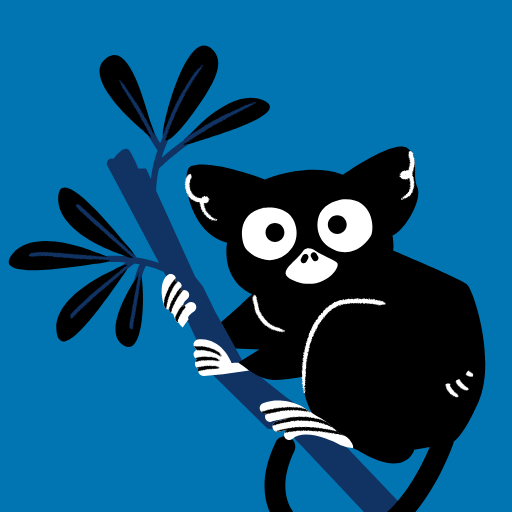
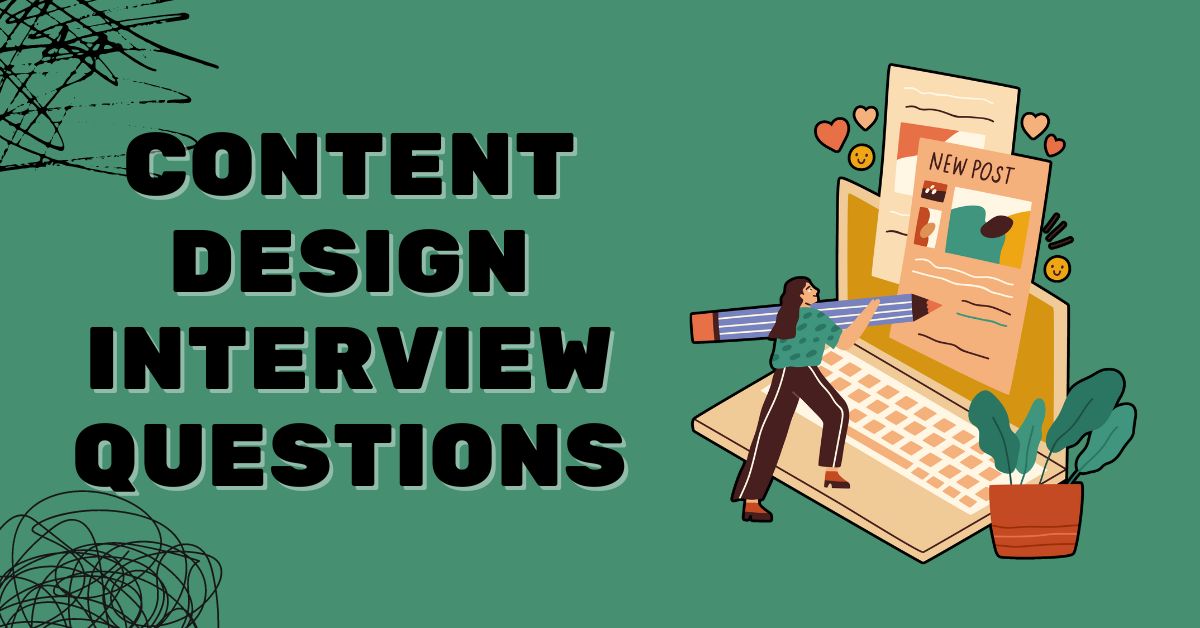

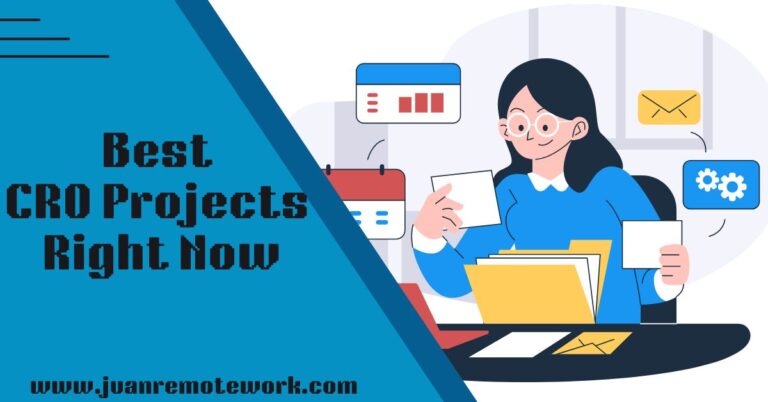
![30 Content Marketing Interview Questions + Answers [2024]](https://www.juanremotework.com/wp-content/uploads/2024/08/a-perosn-being-interviewed-by-a-male-hiring-manager-768x402.jpg)
